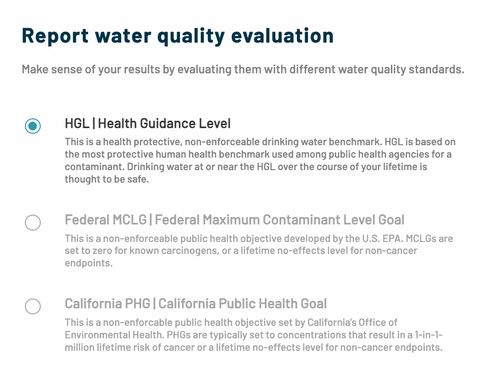
What Is In My City Tap Water?
Our blog is written by real experts— not AI. Each guide is carefully reviewed and updated based on the latest research. Plus, with no affiliate links, you can count on unbiased insights you can trust.
When you always have access to clean, safe drinking water, it can be easy to take for granted. Then a crisis like Flint, Michigan strikes. Suddenly, you start to question what flows from your tap.
While most U.S. citizens can consume their tap water without worry, exceptions certainly exist. Despite the fact that all public water suppliers in the nation are required to uphold certain levels of drinking water standards, quality varies greatly and violations of the standards can exist.[1]
Of the more than 160,000 public water systems in the country, no two are exactly alike. They each differ in:
Additionally, water quality also varies significantly within every system. The following are some factors that contribute to differences in tap water quality from customer to customer within the same system:
Because U.S. drinking water infrastructure has been chronically underfunded for decades and contaminants are regulated based on health risk and economic feasibility, many water systems are forced to resort to shortcuts in both testing and treatment options.
Supposing that the water leaving your local treatment plan is clean, it may not stay that way. It can take anywhere between three and seven days for water to reach your faucet. The age and type of pipe in the distribution system and in your home all play a role in the safety of your tap water quality.
How Can You Find Out What’s in Your Water?
The EPA requires that public water systems serving 100,000 people or more publish an annual Consumer Confidence Report (CCR) on the internet. [2] While it also strongly encourages smaller systems to do the same, tracking down this information can be challenging. If you are served by a smaller system and are curious about what is in your city water, we recommend that you start your search here–where the EPA has compiled a list of all water quality reports of which it is aware.[3]
If your Consumer Confidence Report does not provide you the information you are seeking, Tap Score can help.
You can search your city's water quality at Tap Score's City Water Project and see water quality at any address in the US served by a water utility.
Learn more here: City Water Project
Still Not Sure? Test Your Water!
While there are a lot of great resources regarding water quality reports, the only sure-fire way to really know what’s in your water is to test it yourself. That’s where Tap Score comes in. Our Advanced City Water Test will give you answers if you are unsure.
Who Is This Test For?
Tap Score’s Advance City Water Test is ideal for people who live in a home built prior to 1986, are served by old infrastructure, or have children or other vulnerable individuals (such as people with compromised immune systems or the elderly) living in their home.
It’s also built for people who suspect their water may have issues based on the way their water tastes, smells, or looks.
It addresses the most common concerns found in city water, as well as contaminants that can pose the great health risks. From heavy metals to compounds related to chlorine and chloramine disinfection–this testing package is a way to learn exactly what’s in your water.
What Does Tap Score’s Advanced City Water Test Analyze For?
All testing is performed with EPA certified testing methods in our network of certified laboratories. The Advanced City Water Test from Tap Score tests for 108 parameters, including: heavy metals, minerals, fertilizers, inorganics, general chemistry, physical properties, general chemistry, and volatile organic compounds (including disinfection byproducts).
How Do I Evaluate My Water Test Results?
Even though the multitude of factors that contribute to overall water quality are complex, Tap Score has made understanding your water quality result easy. Take a look at an example Tap Score Report here.
Not only are all results quantified, each result will include a description of common sources, potential health effects, impacts on plumbing, and possible aesthetic effects (such as taste, smell, or color).
All of the individual results of each parameter tested will also be processed through the Tap Score algorithm to generate a numeric score (0-99). This algorithm evaluates the potential health, aesthetic, and plumbing effects of your lab-submitted water sample, providing a rigorous yet clear picture of your water quality in language anyone can understand.
Additionally, a Tap Score report allows you to see how your results compare to an array of different benchmarks. For example, you’ll be able to see how they compare to legally enforceable federal regulatory limits (MCL), non-enforceable regulatory goals (MCLG), public health goals (PHG), etc.

What Happens If I Find Contaminants in My Water?
If your Tap Score test reveals that your water system has left you with less than desirable water, there is hope. Every Tap Score Report includes unbiased and affordable treatment/filtration recommendations that are specifically tailored to combat the contaminants found in your Tap Score Report.
Unlike treatment companies that often recommend unnecessarily expensive treatment options, Tap Score is not incentivized in any way to suggest specific treatment options. We do not make or sell any treatment products, nor are we financially compensated to do so. Our goal is simply to match your unique water quality with the best technology available to improve your drinking water.
Read More
▾
The Lead Series: Flint, Michigan and Corrosive River Water | SimpleLab Tap Score
What Is The Difference Between MCLG and MCL? | SimpleLab Tap Score
Drinking Water Infrastructure Report Card: US Earns A “D” | SimpleLab Tap Score
SimpleLab Water Quality Search
Chlorine and Chloramine as Water Disinfectants | SimpleLab Tap Score
Benefits of a Laboratory Network | SimpleLab Tap Score
How Does the Tap Score Algorithm Work








